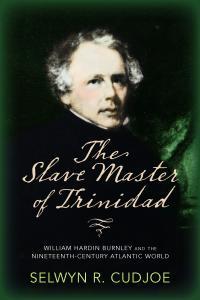War Is Hell
By Dr Selwyn R. Cudjoe
December 04, 2023
In those halcyon days of the 1950s and the '60s when the isms and schisms (such as nationalism, socialism, and existentialism) ruled the day, we were sure our generation would solve the world's problems. We are close to the end of the first quarter of the 21st century, and peace and tranquillity are nowhere in sight.
We watch with alarm at the wars in the Middle East. Even a conservative reading of the casualty figures in Gaza "shows that the pace of death during Israel's campaign has few precedents in history. People are being killed in Gaza more quickly, they say, than in even the deadliest moment of US-led attacks in Iraq, Syria and Afghanistan, which were themselves widely criticised by human rights groups". (NYT, November 25.)
In Israel's fight against Hamas, "more than 60,000 buildings have been damaged or destroyed in the Gaza strip... including about half of the buildings in Northern Gaza". (NYT, November 25.) Northern Gaza "is already a bombed-out wasteland. For the strip's 2.3 million people the future promises only misery and danger". (FT, November 28.) Palestinian authorities say at least 14,800 people in Gaza, mostly women and children, have been killed since the Israeli offensive began. (FT, November 29.)
During the recent four-day pause, Om Yazan Qodeih and her husband Ziad returned to the strip to see the damage that had been done to their home and what they could retrieve. A saddened Ziad exclaimed: "I don't even know where we will go if we survive this war. Are we going to continue to live in UN schools?... Most people now have damaged or destroyed homes." (FT, November 28.)
Fawzeya al-Najjar also returned to her house to assess the damage. She was alarmed by what was done to her neighbourhood. Like the Qodeihs, she felt they could avoid the humiliation of remaining in a UN school where "hundreds of people share a single bathroom... We feel crushed. Our family has already lost dozens of martyrs, including women and children. Yesterday my 16-year-old nephew was killed". (FT, November 28.)
Harlan Ullman, senior adviser, Atlantic Council in Washington, DC, opined: "War is about killing the enemy and killing as much of the enemy's ability to make war as possible... In Gaza, Israel will continue to kill 'innocent' civilians and regretfully call it 'collateral damage'. This is war." (FT, November 27.)
The Gaza Strip is a killing field. It's 25 miles long and an average of less than six miles wide, for a total area of 141 square miles. Trinidad's land mass is 1,841 square miles. In other words, the Gaza Strip is no larger than the northern part of Trinidad.
William Sherman, a general in the Union Army during the US Civil War, wrote: "War is hell." Ullman supports Sherman's conclusion. "During the second world war, Dresden was not the only city levelled. More Japanese and Germans were killed in fire bomb raids on Tokyo, Nagoya, Haruna and Berlin and Hamburg than in Hiroshima and Nagasaki. American forces in the Pacific regarded the Japanese army as evil and gave no quarter in combat."
The Joint Commission for the Investigation of the Atomic Bomb on Japan was set up by the US and Japan. It estimated that in Hiroshima 64,500 people had died by mid-November 1945 and 72,000 had been injured. At Nagasaki 39,214 had been killed and 25,153 were injured. Over 225,000 Japanese were killed and injured in that war.
The Middle East is not the only place where the horror of war is eating up people. In Sudan, in this year alone, 9,000 people have been killed and about 12,000 injured. Another 5.6 million Sudanese have been forced to flee their homes. The United Nations has called it "one of the worst humanitarian nightmares in recent history". These examples of the carnage of war can be expanded.
In the late 1950s I saw Audie Murphy's film, To Hell and Back, at Monarch cinema in Tunapuna. It was the first movie I had ever seen at a public cinema. Murphy, one of the most decorated American combat soldiers of World War II, played himself in this movie. We, in pit, sat back from a distance and marvelled at his courage and defiance in the face of the war's carnage.
One description of the movie read: "Although still under 22 years old on V-E Day, he was credited with having killed, captured, or wounded 240 Germans. He emerged from the war as America's most decorated soldier, having received twenty-one medals, including our [US'] highest military decoration, the Congressional Medal of Honour." Murphy was a hero that we, as young boys, admired.
In those teenage years, we accepted such violence as normal. We applauded Murphy's bravery and identified with his taking of human life. Now that I have become man and put away childish things and thoughts, as the Bible says, I take a more critical look at the horrendous killing of war and am appalled by what I see.
War brings out the most bestial dimensions of our humanity and demonstrates the expendability of human life in the cause that is supposed to be of a higher purpose than we can discern. Maybe one day, not in my lifetime, we will learn what the higher purpose is. Today, we hope all that killing ceases. It is neither good nor desirable.
—Prof Cudjoe's e-mail address is scudjoe@wellesley.edu. He can be reached @ProfessorCudjoe.
Share your views here...

The Slave Master of Trinidad by Dr. Selwyn R. Cudjoe
|

